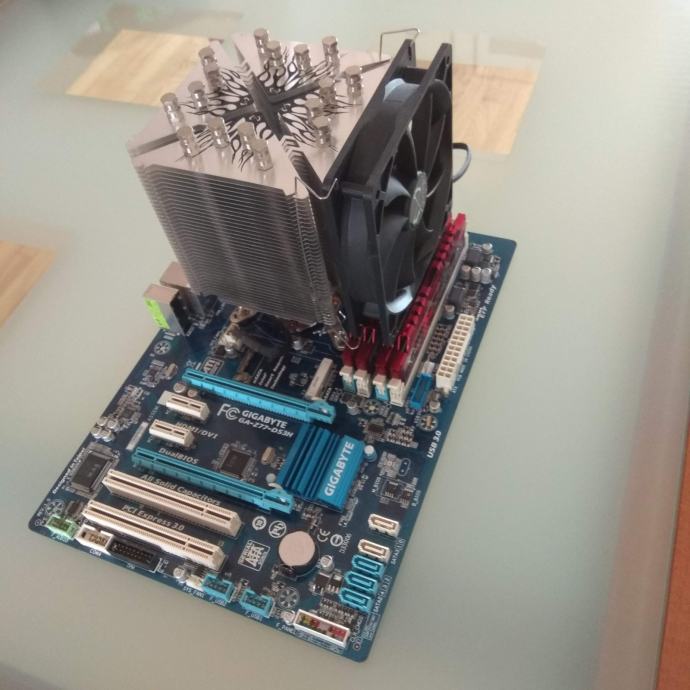
 Oct 11th, 2022 NVIDIA GeForce RTX 4090 Founders Edition Review - Impressive Performance. Programs using Advanced Vector Extensions (AVX) can run on this processor, boosting performance for calculation-heavy applications. Additionally, IOMMU virtualization (PCI passthrough) is supported, so that guest virtual machines may directly use host hardware. Hardware virtualization is available on the Core i5-3550, which greatly improves virtual machine performance. This processor features the Intel HD 2500 integrated graphics solution. For communication with other components in the system, Core i5-3550 uses a PCI-Express Gen 3 connection. The highest officially supported memory speed is 1600 MHz, but with overclocking (and the right memory modules) you can go even higher. Intel's processor supports DDR3 memory with a dual-channel interface. With a TDP of 77 W, the Core i5-3550 consumes typical power levels for a modern PC. The multiplier is locked on Core i5-3550, which limits its overclocking potential. Intel is making the Core i5-3550 on a 22 nm production node using 1,400 million transistors. Core i5-3550 has 6MB of 元 cache and operates at 3.3 GHz by default, but can boost up to 3.7 GHz, depending on the workload. It is part of the Core i5 lineup, using the Ivy Bridge architecture with Socket 1155. Thanks for putting it all out on the table now I know why it throttles the way it does and that I dont need to be going fast all the time.The Intel Core i5-3550 was a desktop processor with 4 cores, launched in April 2012. With what I'm doing (typing this reply with a couple other tabs open), there's no need to run at a constant 4.2, and frankly, I can't tell the difference without staring at CPU-Z. Right now, my 4770K is intermittently switching between 0.8 Ghz, ~3.5 Ghz, and 4.2 Ghz. When you launch something that does need the extra power, it will speed up accordingly and deliver as much power as it can. This isn't because it's being lazy it's doing this because there is absolutely no benefit from running itself at max speed all the time, and running all the time at max frequency will only wear it out faster (probably not enough to matter, but whatever).
Oct 11th, 2022 NVIDIA GeForce RTX 4090 Founders Edition Review - Impressive Performance. Programs using Advanced Vector Extensions (AVX) can run on this processor, boosting performance for calculation-heavy applications. Additionally, IOMMU virtualization (PCI passthrough) is supported, so that guest virtual machines may directly use host hardware. Hardware virtualization is available on the Core i5-3550, which greatly improves virtual machine performance. This processor features the Intel HD 2500 integrated graphics solution. For communication with other components in the system, Core i5-3550 uses a PCI-Express Gen 3 connection. The highest officially supported memory speed is 1600 MHz, but with overclocking (and the right memory modules) you can go even higher. Intel's processor supports DDR3 memory with a dual-channel interface. With a TDP of 77 W, the Core i5-3550 consumes typical power levels for a modern PC. The multiplier is locked on Core i5-3550, which limits its overclocking potential. Intel is making the Core i5-3550 on a 22 nm production node using 1,400 million transistors. Core i5-3550 has 6MB of 元 cache and operates at 3.3 GHz by default, but can boost up to 3.7 GHz, depending on the workload. It is part of the Core i5 lineup, using the Ivy Bridge architecture with Socket 1155. Thanks for putting it all out on the table now I know why it throttles the way it does and that I dont need to be going fast all the time.The Intel Core i5-3550 was a desktop processor with 4 cores, launched in April 2012. With what I'm doing (typing this reply with a couple other tabs open), there's no need to run at a constant 4.2, and frankly, I can't tell the difference without staring at CPU-Z. Right now, my 4770K is intermittently switching between 0.8 Ghz, ~3.5 Ghz, and 4.2 Ghz. When you launch something that does need the extra power, it will speed up accordingly and deliver as much power as it can. This isn't because it's being lazy it's doing this because there is absolutely no benefit from running itself at max speed all the time, and running all the time at max frequency will only wear it out faster (probably not enough to matter, but whatever). 

When the chip decides that it doesn't need to run at 3.7, it won't run at 3.7. This isn't throttling this is how Turbo is designed to work. If you're using more than one core, it will only run at 3.5 or 3.6 Ghz maximum (depending on what turbo stepping this CPU has). The "max turbo frequency" specified only refers to the maximum clockspeed with only one core active.







 0 kommentar(er)
0 kommentar(er)
